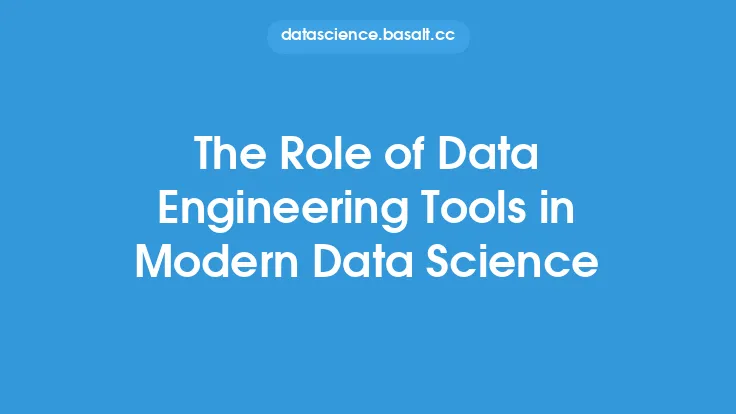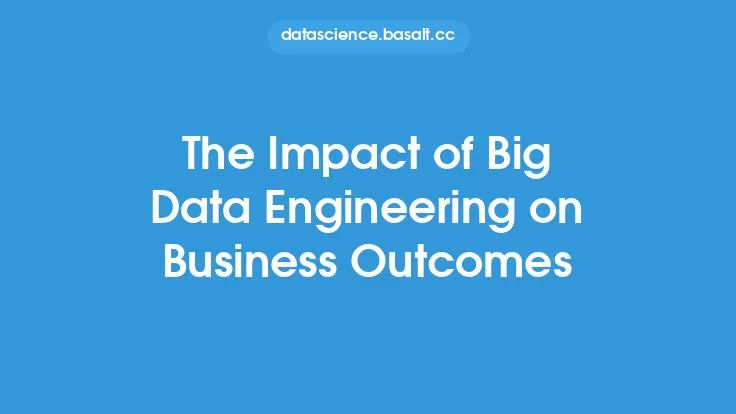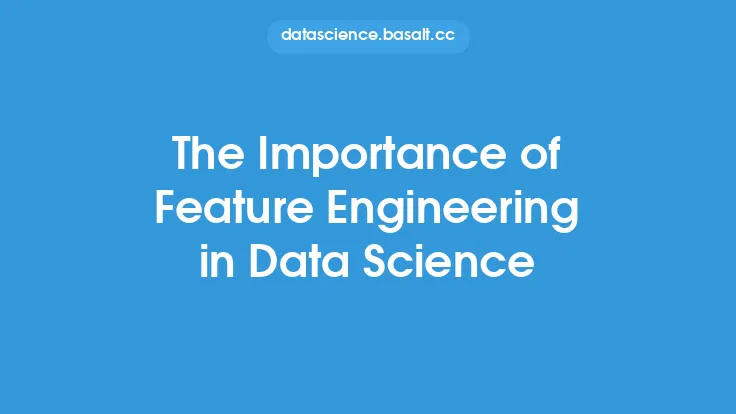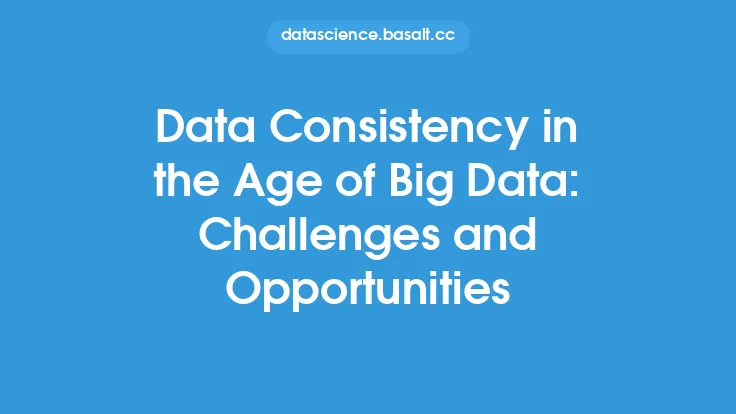In today's fast-paced, data-driven world, businesses are constantly seeking ways to stay ahead of the competition and make informed decisions. One key aspect that has become crucial for modern businesses is big data engineering. Big data engineering refers to the process of designing, building, and maintaining large-scale data systems that can handle vast amounts of structured and unstructured data. This field has become increasingly important as the amount of data being generated continues to grow exponentially, and businesses need to find ways to collect, store, process, and analyze this data to gain valuable insights.
Introduction to Big Data Engineering
Big data engineering involves a range of activities, including data ingestion, data processing, data storage, and data analytics. It requires a deep understanding of computer science, software engineering, and data science, as well as expertise in specific technologies such as Hadoop, Spark, and NoSQL databases. Big data engineers use a variety of tools and techniques to design and build data pipelines, data warehouses, and data lakes, and to develop algorithms and models that can extract insights from large datasets. The goal of big data engineering is to provide businesses with a scalable, flexible, and secure data infrastructure that can support their data-driven decision-making needs.
Key Components of Big Data Engineering
There are several key components of big data engineering, including data ingestion, data processing, data storage, and data analytics. Data ingestion refers to the process of collecting and transporting data from various sources, such as social media, sensors, and logs, into a centralized data repository. Data processing involves transforming and processing the ingested data into a format that can be analyzed, using technologies such as MapReduce, Spark, and Flink. Data storage refers to the process of storing the processed data in a scalable and secure manner, using technologies such as Hadoop Distributed File System (HDFS), Amazon S3, and Google Cloud Storage. Data analytics involves using statistical and machine learning techniques to extract insights from the stored data, using technologies such as R, Python, and SQL.
Big Data Engineering Tools and Technologies
There are many tools and technologies that are used in big data engineering, including Hadoop, Spark, NoSQL databases, and data warehousing solutions. Hadoop is an open-source framework that provides a distributed computing environment for processing large datasets. Spark is an in-memory data processing engine that provides high-performance processing of large datasets. NoSQL databases, such as MongoDB and Cassandra, provide a flexible and scalable way to store and retrieve large amounts of unstructured data. Data warehousing solutions, such as Amazon Redshift and Google BigQuery, provide a centralized repository for storing and analyzing large datasets.
Benefits of Big Data Engineering
Big data engineering provides many benefits to businesses, including improved decision-making, increased efficiency, and enhanced customer experience. By providing a scalable and secure data infrastructure, big data engineering enables businesses to collect, store, and analyze large amounts of data, and to extract valuable insights that can inform their decision-making. Big data engineering also enables businesses to automate many of their data processing tasks, which can improve efficiency and reduce costs. Additionally, big data engineering can help businesses to provide a more personalized and responsive customer experience, by analyzing customer data and behavior.
Challenges of Big Data Engineering
Despite its many benefits, big data engineering also presents several challenges, including data quality, data security, and scalability. Data quality is a major challenge in big data engineering, as large datasets can be noisy, incomplete, and inconsistent. Data security is also a major concern, as large datasets can be vulnerable to cyber attacks and data breaches. Scalability is another challenge, as big data systems need to be able to handle large amounts of data and scale to meet the needs of growing businesses.
Best Practices for Big Data Engineering
There are several best practices that can help businesses to overcome the challenges of big data engineering, including data governance, data quality control, and scalability planning. Data governance involves establishing policies and procedures for managing data, including data quality, data security, and data access. Data quality control involves implementing processes and procedures for ensuring the accuracy, completeness, and consistency of data. Scalability planning involves designing big data systems that can scale to meet the needs of growing businesses, including planning for increased data volumes, user growth, and system complexity.
Real-World Applications of Big Data Engineering
Big data engineering has many real-world applications, including customer analytics, predictive maintenance, and fraud detection. Customer analytics involves using big data engineering to analyze customer data and behavior, and to provide personalized recommendations and offers. Predictive maintenance involves using big data engineering to analyze sensor data and predict equipment failures, which can help businesses to reduce downtime and improve efficiency. Fraud detection involves using big data engineering to analyze transaction data and detect suspicious activity, which can help businesses to prevent financial losses.
Conclusion
In conclusion, big data engineering is a critical component of modern business, providing a scalable, flexible, and secure data infrastructure that can support data-driven decision-making. By understanding the key components of big data engineering, including data ingestion, data processing, data storage, and data analytics, businesses can design and build big data systems that meet their needs. By using big data engineering tools and technologies, such as Hadoop, Spark, and NoSQL databases, businesses can extract valuable insights from large datasets and improve their decision-making. By following best practices, such as data governance, data quality control, and scalability planning, businesses can overcome the challenges of big data engineering and achieve their goals.





